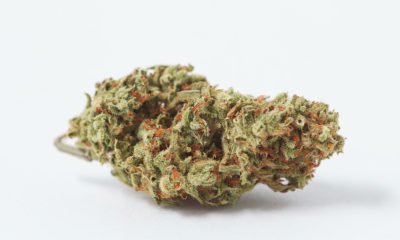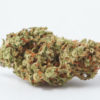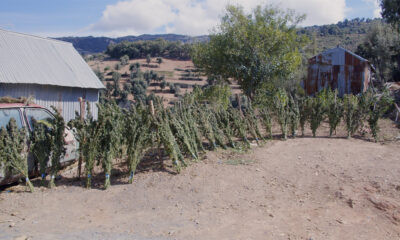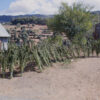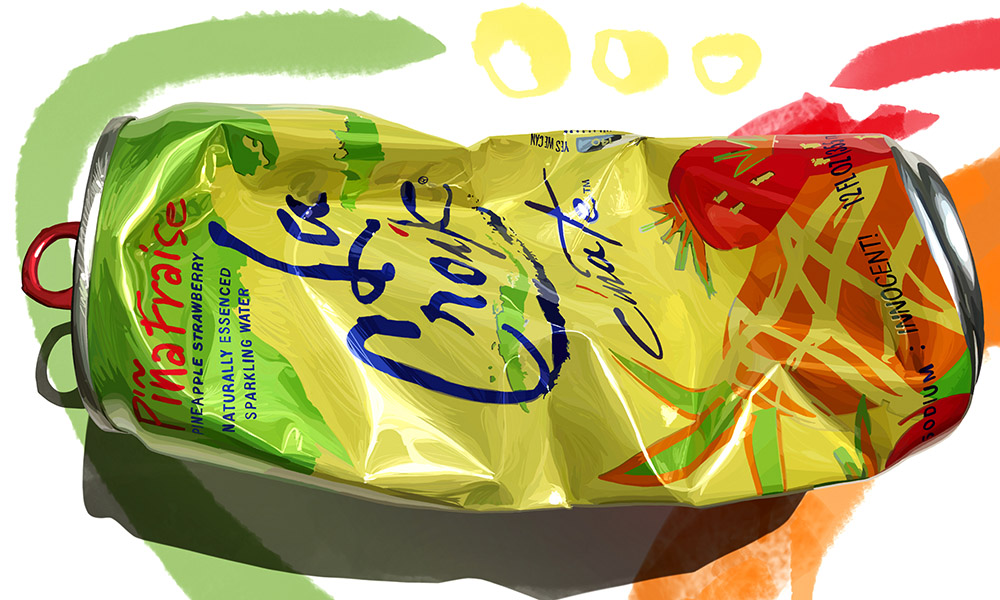
Culture
What LaCroix and Marijuana Have in Common (It’s in the Water)
The essence dictating the flavor of America’s favorite fizzy water is the same powering the smell of your top strain: It’s the terps.
Sparkling water featuring flavors mixed in with the fizzy, refreshing bubbles was a popular drink well before LaCroix’s emergence as the leader in the space — and it is still is. But only (so far) only LaCroix has seen its sales figures triple since 2015, a show of dominance sparked by the cans’ 80s-retro aesthetics and a general consumer trend away from soda and towards healthier options, which with its “all-natural” ingredients, is what LaCroix purports to be.
At least part of that magic formula was challenged with a lawsuit earlier this month, filed by a Chicago law firm that alleges LaCroix’s bubbles are in fact part of chemical cocktails full of “compounds that have been adjudged synthetic and/or artificial.” One of these includes linalool, which, the lawyers allege, is a pesticide used to kill cockroaches. And people drink this stuff?
Yes, and we will do you one better. They (that is, we and, probably, you) also smoke it. And to no ill effects. In fact, in the right amounts — that is, the levels that appear in cannabis and possibly also LaCroix sparkling water — linalool and other aromatic essential oils are good.
By now, most all “real weedheads” and even some casual cannabis consumers are familiar with at least the word “terpenes,” even if they have never seen a terpene wheel or could name the scents tickling their nostrils every time they open up a jar of their favorite strain.
Simply put, terpenes are molecules that are found in the essential oils of plants. And terpenes are playing an emerging role in both cannabis-based therapeutics and wellness as well as how marijuana is marketed and sold.
The human body’s senses of smell and taste are linked to the brain’s pleasure and memory banks. Though a direct causal relationship has not been established, there is reason to believe that when a human sniffs, say, a bed of lavender and notes a release of tension or improvement in mood, it may be because the terpene (linalool, in the case of lavender) is having a direct effect. Similar effects have been observed with most of the 200 or so identified terpenes present in various strains of cannabis. Connoisseurs by now can probably name the most common or perhaps their favorite terpenes — or at least they can identify limonene as one of the culprits behind the waft of citrus when they sniff Sour Diesel, OG Kush, or similar strains. And, slowly but surely, cannabis retailers are adjusting to this trend by identifying on their product packaging various’ strains terpene contents.
LaCroix’s waters are flavored with what the company calls “natural flavors,” which are the essential oils from whatever source material they’re trying to make the water taste like. Think lemon peel, orange rinds, apple skins. In other words, think terpenes.
Honing in on linalool as a toxic ingredient was an odd move by the LaCroix haters. While this terpene may be toxic to cockroaches — which most of us would argue is a good thing — it is beneficial to humans. As a 2002 study published in the journal Phytomedicine found, linalool is linked to anti-inflammatory benefits, that is, some of the same healing properties offered by cannabinoids like CBD. If your favorite cannabis strain has some linalool in it, you might experience a reduction of swelling and increased ease of movement after consuming it.
So far from retreating under attack and copping to marketing poison (which, by all accounts, they do not), LaCroix could even go one further. They could start stamping “sparkling water, with possible medical benefits” on their cans. It’s a claim similar to that made by medical cannabis, and it has the same scientific basis.
TELL US, did you know LaCroix is flavored by terps?












